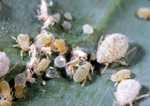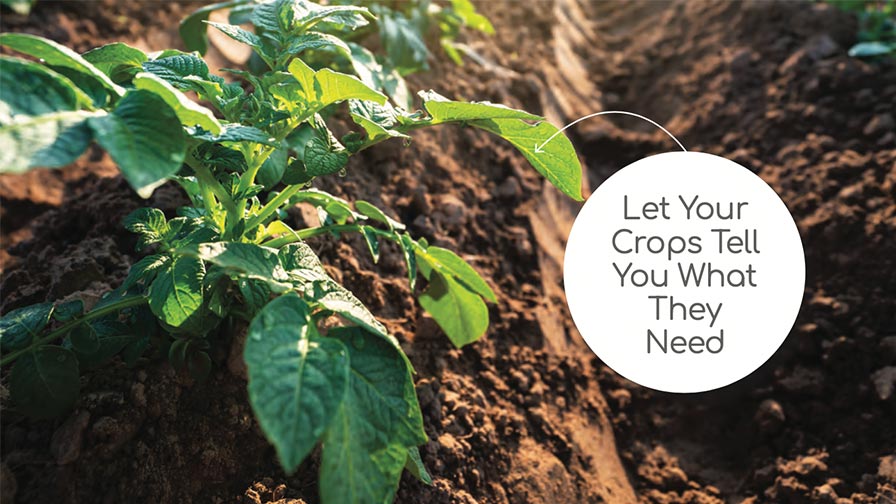Pest Of The Month: Cabbage Aphids

Identification
Cabbage aphids are green-gray with a white, waxy coating and commonly live in dense colonies. The pest does not normally affect seedlings, but builds up after thinning or transplanting. Yellow patches may appear on the foliage of infested plants. Large colonies can stunt or kill small plants, but the most serious problem is contamination of the harvested crop. Dense populations cause leaves to curl around them, making them harder to reach with pesticide applications.
Survival And Spread
The aphid has a simple life cycle with adult females giving birth to live offspring throughout the year. Both winged and wingless adults develop. The aphid only infests cruciferous crops, but can survive on related weedy brassicas when cole crops are not present.
Management
Cultural practices and biological control agents can reduce aphid infestations and delay or prevent the need for pesticide use.
Cabbage aphids have many natural enemies that can sometimes control low populations; however, short crop life, use of pesticides for other pests, the tendency for the aphids to be deep within the head, and various other factors make it difficult for natural enemies to keep rapidly rising aphid populations from reaching economic levels. Important natural enemies include lady beetles, syrphid fly larvae, fungal diseases, and parasitic wasps.
Most fields require at least one insecticide application against aphids before heading. If applications can be delayed until just prior to head formation, growers will benefit from reduced expense and maintain the natural enemies that will keep aphids and other pests — including worms — below economically damaging levels.
Organic producers will need to rely on biological and cultural control techniques, as well as sprays of insecticidal soap and other approved materials. Destroy crop debris after harvest and remove or control alternate hosts — including mustards and related weeds — around field borders.
It is important to scout fields regularly — preferably each field at least twice per week. Sample upwind field borders and edges next to other crucifers first; this is where aphids tend to initially appear. If no aphids are found, you may not need to take field samples. Take field samples in a zigzag pattern and check all quadrants of the field because aphid populations are often clumped.










